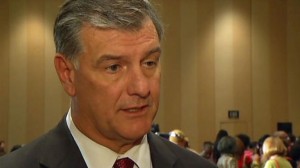Archive for October 2013
It’s Official! Frisco City Hall Wants to Open the Town’s First Toxic Waste Dump
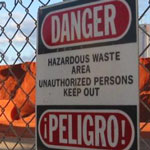 Yesterday, Frisco Unleaded announced it was launching a community clean-up campaign to spotlight the city's indecision about submitting a claim to bankruptcy court covering the entire bill for a complete clean-up of the Exide site. We're having our first event on the Square, Saturday, November 9th.
Yesterday, Frisco Unleaded announced it was launching a community clean-up campaign to spotlight the city's indecision about submitting a claim to bankruptcy court covering the entire bill for a complete clean-up of the Exide site. We're having our first event on the Square, Saturday, November 9th.
In response to reporter's inquires about our objections, the Austin-based "environmental attorney" the city has hired finally admitted what the Mayor and Council have been afraid to say out loud to its own residents at the last two council meetings – that the City is poised to approve the siting of a new permanent toxic waste dump in Central Frisco to bury the Exide waste instead of a complete clean-up.
The reason for this decision? Because it's better to have the waste buried in Frisco, next to people, schools and parks, than to transport it to a more isolated licensed landfill designed for the disposal of hazardous waste.
Think we're joking? Go read the article yourself. This is what the City is saying:
"I strongly believe the city is in a much better position to control its liability and protect the public by maintaining control of that waste in the long term right here with the proper remediation and containment mechanism than it would be to haul it to Oklahoma or Colorado orto some other hazardous waste landfill where it's then mixed with everybody else's waste and you become liable for everythingat that site."
We hardly know where to start in replying to this absurd argument, but let's try. with our own….
TOP TEN REASONS
WHY THE CITY'S DUMP PLAN IS A BAD IDEA
10. You admit there's substantial liability in disposing of Exide's waste. But you're willing to impose that liability on your own residents here in Frisco, at a location never designed to be a toxic dump that's near neighborhoods, schools and parks, rather than transferring that liability to a more isolated location outside of Frisco designed for the job of burying hazardous waste. Thanks so much for caring.
9. And you're relying on Exide, the state, and EPA to monitor and maintain this new toxic dump site for the rest of eternity? Just like they did for the site the first time around as a smelter? What could possibly go wrong?
8. Apparently you've only looked at the costs of 30 years of monitoring and maintenance at this new toxic dump. Why stop at 30? It doesn't get any less toxic with time. This thing is permanent.
7. You say you're very concerned about the liability. What's the liability for a catastrophic accident that sees toxic lead waste pouring into Stewart Creek going through Grand Park and residential neighborhoods along the way to Lake Lewisville?
6. Will the landfill meet all the modern EPA requirements, or will they have to be exempted from some because of their location and circumstance? In other words, are you building a state-of-the-art facility, or something less? Ah, you don't know.
5. Has the City performed some kind of secret risk assessment regarding the hazards of building a new toxic waste landfill for Exide's waste in Frisco vs. disposing of it in a licensed landfill that's already built? We didn't think so.
4. So your attorney says the City of Frisco ALREADY has equally liability regarding the waste at Exide. How exactly is that going to affect the City's financial obligations?
3. Has the city compared the cost of decreased property values and property taxes that a toxic landfill would create vs. the economic benefits of a complete clean-up of the Exide site? And you call yourselves Republicans?
2. Can you point to any city, especially one of Frisco's caliber, that has actively recruited a hazardous waste landfill to feature in its city center, upstream of it's biggest park? We'll wait for an answer.
1. If burying lead waste in place isn't such a big deal, why didn't Dallas seek that kind of solution in West Dallas with its numerous piles of battery chips and slag? Instead, they dug it up and hauled it out.
So….West Dallas got a better clean-up than Frisco is going to get? Interesting twist.
What You Can Do:
3. Come to our Community Clean-Up on the Square on Saturday November 9th from 10 am to 2 pm where you can get free lead testing, educate yourself about this situation, pick up bumper stickers, sign postcards to the Council, and show your support for a complete clean-up instead of a toxic dump.
4. Use our new website devoted to this dump issue – www.nofriscodump.com and our Facebook page to keep in touch with the latest developments.
5. Get more involved. We know you thought this was over when the smelter closed. But it's not. Don't let the city council create another disaster at the Exide site. Only Frisco residents can stop this dump.
Downwinders Had A Good Day in Court Battling EPA Over Cement Plant Rules
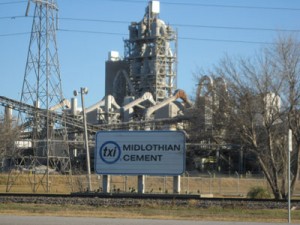 Downwinders has been trying to get new emission limits for cement plants since the mid-1990's. We're still trying.
Downwinders has been trying to get new emission limits for cement plants since the mid-1990's. We're still trying.
The first real reform in those rules during the Clinton Administration were pathetically inadequate. Downwinders and other groups assisted by DC-based Earth Justice sued to get them strengthened. We won. When new rules finally emerged from EPA in 2009, they were much better. Many of you came out to the historic national hearing at the DFW Airport hotel to testify in favor of them.
These rules were on their way to being signed by President Obama when they got hijacked by industry at their stop at the Office of Management and Budget, which must review all new regulations. When they emerged, they were unrecognizable in many ways, with deadlines pushed back by years and the important Particulate Matter standard being significantly weakened.
Once again, we're back in court trying to get these watered down rules thrown out. Last week, the DC appeals court that usually takes up federal regulatory fights heard oral arguments from both sides, and even the Republican judges on the panel were skeptical of the Administration's rewrite job.
Reprinted in full below is an inside-the-Beltway account of the proceedings that gives you some idea of what's at stake and what a good day citizens and their representatives enjoyed in court. No date on when to expect a ruling. Even then, if we win, the rules go back to EPA to be rewritten again, albeit with more judicial constraint…theoretically at least.
Judges seem skeptical of EPA claims in cement emissions case
Jeremy P. Jacobs, E&E reporter
Published: Thursday, October 24, 2013
Public health advocates argued in court today that U.S. EPA unlawfully weakened and delayed air standards for cement manufacturers, appearing to gain some traction with a panel of federal appellate judges.
The Natural Resources Defense Council contends EPA caved to industry pressure when it revised its National Emission Standards for Hazardous Air Pollutants, or NESHAP, for portland cement kilns and pushed back its compliance date by two years.
EPA's standards apply to several pollutants, including particulate matter, mercury and other acid gases. The agency revised the particulate matter standard after a court ruling in 2011, but advocates claim the agency did more than the ruling required.
James Pew of Earthjustice, representing the NRDC, told the U.S. Court of Appeals for the District of Columbia Circuit that EPA "gratuitously weakened the particulate matter standard" and violated the "plain and literal meaning" of the Clean Air Act.
Further, he said, many of the issues EPA addressed with its changes "didn't come up" in the previous case.
The cement NESHAP has long been the subject of controversy and litigation.
The kilns are one of the top sources of man-made mercury emissions in the United States. Public health advocates forced EPA to set the standards in a 2010 lawsuit, and when the agency issued the standards later that year it said they would prevent 960 to 2,500 deaths per year.
Industry, however, quickly challenged the standards at the D.C. Circuit. In December 2011, the court ordered EPA to reconsider the standards by taking commercial incinerators that burn solid waste out of its calculations. However, the court largely left the standards in place, including their 2013 compliance deadline (E&ENews PM, Dec. 9, 2011).
When EPA recalculated the standard for particulate matter, the advocates claim the agency made it less stringent. Additionally, EPA reached a settlement with the portland cement industry to delay compliance to September 2015 for all pollutants — not just particulate matter (Greenwire, Dec. 7, 2012).
Public health advocates challenged both actions, as well as a shift from continuous monitoring to one-time annual stack testing for compliance — which also changed the particulate matter standard. The environmentalists also question the standard's inclusion of an "affirmative defense" that protects kilns from citizen lawsuits if they violate the standards during an unavoidable malfunction.
Each issue came up today before a three-judge panel, which included two judges who are considered potential future Supreme Court nominees. The panel appeared receptive to some of the advocates' arguments but not to others.
For example, Judge Brett Kavanaugh, one of the country's leading conservative jurists, appeared skeptical of EPA's decision to delay standards for mercury and other gases to 2015, even though the Clean Air Act says standards must take effect within three years. The 2010 standards for those pollutants, which weren't affected by the D.C. Circuit ruling in 2011, should be in effect now.
"I don't understand," said Kavanaugh, a Republican appointee. "I need help. I don't understand the interrelatedness."
Further, Senior Judge Harry Edwards, a Democratic appointee, said EPA could have easily linked the standards by saying it wasn't "practicable" to meet some without meeting the others. But EPA, Edwards said, never made that argument in the rulemaking.
"I'm really not following this," Edwards said. "Where does the agency make the finding … that compliance couldn't be done practicably?"
Matthew Oakes of the Department of Justice, representing EPA, countered that all the standards are related because the pollution control technology required to limit particulate matter also controls emissions of mercury and other gases. Therefore, it didn't make sense to require kilns to install technology for mercury, for example, before it knew the final particulate matter standard, he said.
That argument was echoed by Carter Phillips of Sidley Austin LLP, representing the cement industry, which intervened in the case.
"You cannot implement any of them in a one-off system," he said.
It was unclear which way the judges were leaning with regard to the advocates' arguments surrounding the particulate matter standard itself. But they appeared receptive to their challenge to EPA's affirmative defense.
Oakes argued that the advocates lacked standing to challenge the affirmative defense, meaning they had failed to prove how they would be injured by it. That notion was flatly rejected by the panel, which said the defense would allow kilns to, at times, exceed the standards, which would harm human health. Therefore, the advocates have grounds to bring the lawsuit, the judges said.
The panel was also skeptical of EPA's arguments on the substantive issue of whether EPA could create the affirmative defense in the first place. Judge Srikanth Srinivasan, President Obama's first appointee to the D.C. Circuit and a leading liberal judge, contended that the Clean Air Act didn't grant EPA that ability.
"This authority wasn't delegated to the EPA to begin with," he said.
Study: Low Levels Of Incinerator Pollution Linked to Premature Births
 A new study being published in the November issue of Epidemiology concludes that even low levels of pollution from solid waste incinerators causes an increase in premature births downwind.
A new study being published in the November issue of Epidemiology concludes that even low levels of pollution from solid waste incinerators causes an increase in premature births downwind.
Italian researchers examined over 21,000 births to women living within four kilometers of one of eight solid waste incinerators operating in the Emilia-Romagna region.
"Each newborn was georeferenced and characterized by a specific level of exposure to incinerator emissions, categorized in quintiles of PM10, and other sources of pollution (NOx quartiles), evaluated by means of ADMS-Urban system dispersion models. We ran logistic regression models for each outcome, adjusting for exposure to other pollution sources and maternal covariates.
Preterm delivery increased with increasing exposure….A similar trend was observed for very preterm babies. Several sensitivity analyses did not alter these results. Maternal exposure to incinerator emissions, even at very low levels, was associated with preterm delivery"
Now, you can reassure yourself that we have no single-purpose solid waste incinerators around these parts the way they do on he East Coast or Midwest, so we don't have to worry about this kind of threat. But that's not entirely accurate.
We do have solid waste incinerators in North Texas, they're just called cement kilns. And we have more incinerator capacity than anyone else in the country when it comes to cement kilns.
And, as it turns out, these cement kilns are expanding their lists of available "fuel" to include solid wastes, as well as coal – medical, municipal, and "hard to burn" plastics, as well as car parts, shingles and carpet remains. It's all part of the new wonderful world of commercial garbage burning. If the kilns happen to make some money in the process of turning themselves into under-regulated incinerators, well, all the better for their operators.
For example, and try not to throw up, in the Philippines, the local cement plant is marketing the burning of "Holcimables." What are "Holcimables" you ask? They're "plastics – styrofoam, sando bags, cellophanes and foil packs – textile and rubber." Yes, the same company that operates a cement kiln in North Texas is burning styrofoam in the name of environmental-friendliness in the Philippines. You can bet the Italian incinerators included in this new study were burning some of the same kinds of wastes with the same ingredients.
Burning stuff is bad, whether it's in an incinerator or a cement kiln. And industry is making it very hard to tell the difference.
City’s Indecision Over Exide Clean-up Spurs Frisco Residents to Do it Themselves

Community Clean-up Begins November 9th with Free Lead Testing on the Square and a Sweep of Grand Park Contamination
For Immediate Release: 9 am, Tuesday, October 29th, 2013
(Frisco)— Frustrated that city officials are wavering between a permanent toxic landfill and a complete clean-up of the notorious Exide lead smelter site, Frisco residents on Tuesday announced their own do-it-yourself effort to prevent what they say is a second disaster in the making.
"At the exact time the City needs a bold and optimistic vision for this huge piece of Central Frisco, our officials seem to be willing to accept the equivalent of a Superfund Site between the new Cowboys headquarters and Toyota Stadium," said Equilla Harper of Frisco Unleaded, the group widely credited with hastening the smelter's demise in 2011.
On Saturday November 9th from 10 am to 2 pm , Harper and other members of her group will be set up in Frisco's main square offering residents free access to an XRF lead analyzer and a trained technician for testing objects such as soil from suspected contaminated Exide lead waste hot spots in town, household objects that residents might suspect contain lead like paint chips, pottery, backpacks, and jewelry, and whatever else they want to bring. No blood or bone testing will be offered, but information on how to get such testing will be available.
They'll also be sending out small teams of investigators to sweep the city's own 300-acre Grand Park property that sits directly downstream of Exide and has already been confirmed by authorities as a contaminated area. Members will flag and collect suspected battery chips and pieces of lead "slag."
It's all part of the group's "community clean-up campaign" meant to put City Hall in the hot seat on the eve of a decision about the Exide property that the residents say could determine the fate of the city's core for decades.
Frisco, along with other cities across the country that believe their communities have been damaged by Exide facilities, must submit a monetary claim by December 9th to the judge hearing the company's bankruptcy hearing. Currently, the city is asking for approximately $20 million. That's only enough to build a new toxic waste landfill on the smelter site, beside Stewart Creek and upstream of the city's Grand Park.
But according to the city's own engineering consultant, it's going to take $135 million to dig up the lead waste, haul it out and make the property and Stewart Creek safe for redevelopment. Frisco Unleaded wants the city to ask the court for this larger amount for a complete clean-up, and they don't know why Frisco officials are hesitating.
"Nobody expects the bankruptcy court to give you everything you ask for. But to get the most money you can, you have to ask for the most, not the least. You don't have to work on Wall Street to know that," said Harper.
So far, the city has remained tight lipped about what it plans to do, refusing to discuss the pros and cons in public. Frisco Unleaded's campaign is meant to bring that debate out in the open.
It's a debate the group thinks it can win if Frisco residents are aware what's at stake. For example, members are arming themselves with information about how much toxic waste landfills can damage property values.
"There probably aren't a lot of people in Jerry Jones' Starwood development just down the street from Exide that realize the Council's decision about Exide could significantly affect their home's re-sale value. There's evidence these landfills can negatively impact property up to five miles away" said Jim Schermbeck of Downwinders at Risk, the 20-year old clean air group that sponsored Frisco Unleaded's start-up.
There's also the fact that the landfill would pose a constant threat of catastrophic failure to Stewart Creek and Grand Park for the entirety of its existence, as well as the more routine danger of leaks and discharges.
"Grand Park will never be Grand as long as there's tens of thousands of tons of toxic lead waste buried upstream, right beside the banks of Stewart Creek," said Meghan Green, a resident who's been involved with the issue for over three years. "We already have parents telling us they'll never use the park as long as that waste remains. That just isn't right and the city needs to realize it's in its best interest for its own citizens to be able to enjoy their own parks without fear of being poisoned."
In the last month, a representative of the group has appeared before the City Council twice to request that they submit the larger figure to the bankruptcy court and declare their public support for a comprehensive clean-up instead of the landfill option. Last week a member received a commitment from Frisco State Representative Pat Fallon to draft a new piece of state legislation that would divert more state battery fee money to cover the costs of a complete clean-up of Exide.
Green and Harper are clearly frustrated that the city isn't being more vocal about what needs to happen with the property. "We're working as private citizens to try and put together a package with enough money to pay for a real clean-up," said Harper. "We don't see the city getting out front and doing the same thing. They need to show leadership and commit to cleaning-up and developing the site so there's no trace of the Exide smelter left. Anything else allows Exide to keep threatening our community."
Why Does The Frisco City Council Want to Build a Lead Fukushima in the Middle of Town?
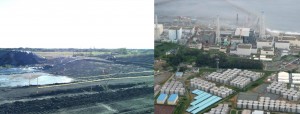 On Monday the Washington Post published a comprehensive look at the troubled Fukushima nuclear power plant site two-and-a-half years after meltdown, and concludes that the clean-up "is turning into another kind of disaster." The same could be said of the Exide lead smelter clean-up in Frisco, and indeed the stories parallel one another in eerie ways.
On Monday the Washington Post published a comprehensive look at the troubled Fukushima nuclear power plant site two-and-a-half years after meltdown, and concludes that the clean-up "is turning into another kind of disaster." The same could be said of the Exide lead smelter clean-up in Frisco, and indeed the stories parallel one another in eerie ways.
One of the most difficult problems at Fukushima has been what to do with so much groundwater flowing through the site. It's already retaining enough radioactive water to fill Yankee Stadium, but almost 400 tons a day still flows into the Pacific. As it turns out, the plant site sits on top of an old riverbed.
One of the most difficult problems at the Exide site is the amount of groundwater running underneath it, flowing into Stewart Creek and on to Lake Lewisville, a source of drinking water for Dallas. As it turns out, some of the most contaminated parts of the Exide facility were built on top of an old branch of Stewart Creek and the facility almost entirely sits in the creek's flood plain. So much groundwater has been found under Exide that the state had to admit that the entire site belonged in a different clean-up category that's 100 times stricter than what it had initially proposed because we could end up drinking that water.
In Japan, Tokyo Electric, the company responsible for the accident three years ago is now responsible for the site's clean-up. It's not going well.
In Frisco, Exide Technologies, the company responsible for causing widespread lead contamination is also in charge of the clean-up of the site. That's not going well in Frisco either.
Tokyo Electric is on the brink of bankruptcy. Exide is already there.
Tokyo Electric keeps under-estimating the scope of the required clean-up, it "doesn't have enough of that questioning attitude" according to one U.S. nuclear official, making the same mistakes that lead to the meltdown. Likewise, Exide keeps underestimating the extent of the contamination at its Frisco site and how much effort it will take to clean it up. It's clean-up plans have been rejected by the state and EPA.
Failure by Tokyo Electric to contain the groundwater problem at Fukushima has lead the government to propose a $500 million "ice wall" that would hold back tons of radioactive water contaminating from the ocean. Failure of Exide to adequately isolate its toxic lead waste from the groundwater running underneath it has prompted a consultant for the City of Frisco to propose building a $23 million, mile-long "slurry wall" to surround a permanent toxic waste landfill on the Exide site, designed to hold back waste from contaminating Stewart Creek and Grand Park.
Tokyo Electric had a plan to "decontaminate" the groundwater on site, only it's never worked, leaving tons and tons of highly radioactive water in storage at the plant. Exide had a plan to "decontaminate" its illegally-stored toxic waste on site, but can't seem to find a way to make it work, leaving thousands of tons of highly toxic lead waste stored at the smelter site.
Tokyo Electric has lost the trust of government officials and the public at large, but is still being allowed to direct the clean-up of its own site. Likewise, even the City of Frisco is skeptical of Exide these days, but the company is still setting the pace for its own clean-up.
But there is one important exception to these parallels. Frisco still has time to change its fate. By December 9th, the Frisco City Council must submit a claim to the judge hearing the Exide bankruptcy case. It can submit a claim for the $23 million option that leaves a toxic landfill in Frisco forever, or it can submit a claim for $135 million, the amount its consultant says is needed to dig-up Exide contamination and haul it away so the land can be redeveloped.
Why would the Council choose any other option other than the most comprehensive one? Great question that no one at City Hall has been able to answer. The submission of the claim to the judge doesn't obligate the city to pay for the clean-up. It's a statement of its goals for the clean-up.
Nobody expects the City to get everything it's asking for, but in a proceeding where many other creditors have lined up to carve up Exide's assets, it needs to protect its self-interests by asking for the maximum credible amount. That's the $135 million figure, backed-up by a report from a city consultant that describes the extensive contamination caused by Exide and what it will take to remove it.
If you haven't already, please send an e-mail to the Frisco City Council requesting that they submit the $135 million claim by the court's deadline of December 9th. To approve the toxic landfill option is to consign Frisco to getting fully "Fukushimaed."
Dallas Drilling Update: It’s All About Holding Mayor Rawlings to His Word Now
“I am personally opposed to urban oil and gas drilling in Dallas.
To paraphrase Ecclesiastes, there is a place for everything under heaven, and I don’t think that place for drilling is in Dallas, in an environment like this.
We continue to grow, and there are generally too many unknowns in respect to urban drilling and its effects on our community’s health and safety. This city can be picky about what type of growth we have.
To that end, I will be supporting the efforts of our CPC on new gas drilling ordinances, to make sure the standards are such to ensure the safety of our citizens.”
– Dallas Mayor Mike Rawlings
August 28th, 2013
Statement before City Council vote on the Trinity East gas drilling and production Special Use Permits
On his way to vote in favor of allowing gas drilling in Dallas, the Mayor of North Texas' largest city seemingly endorsed a perpetual moratorium on gas drilling in Dallas.
And even as he endorsed a moratorium on gas drilling in Dallas, the Mayor also endorsed a City Plan Commission draft ordinance on gas drilling that still allows for it to take place, albeit under very selective conditions.
So which words from that August 28th declaration do we hold the Mayor to when the new gas ordinance comes up for a Council vote?
"I will be supporting the efforts of our CPC on new gas drilling ordinances"
That's all you need to know. There is no qualification there, no balance between the CPC draft and something else. Just full-throated endorsement of the draft, as is. Make him live up to this support in the form of a simple up-or-down vote on the entire ordinance and you've got one of the toughest new templates for how to regulate gas drilling in the state of Texas.
Forget about the first part. Even if you want a moratorium on drilling in Dallas, that's not the issue that will be up for a vote. Nor is there the slightest chance that such an option will appear as an alternative to the approval of a new gas ordinance, no matter how strongly Mayor Rawlings, or Scott Griggs, or Adam Medrano, or Philip Kingston personally feels about it. The choice is between the really bad old gas ordinance and the really good new gas ordinance.
Even if you think the ordinance could use improving (and everyone on this side of the aisle thinks it does), you don't have the votes on the council to improve it. Residents could only muster six "no" votes for the Trinity East fight. Fortunately, they only needed four. You need eight for each and every improvement you want to make to the gas ordinance. They aren't guaranteed.
Mayor Rawlings is one of only three or four mystery votes in the middle that determine the new ordinance's fate, and the most likely weather vane for the whole lot. As he goes, so probably goes North Dallas newcomers like Jennifer Gates and Lee Kleinman. Assuming residents can hold onto the "Trinity East Six," that gives you 8-9 votes. Then, seeing the winds shift, you don't know what other Council members you pick-up trying to get on the right side of things. Chances of improving the ordinance begin and end with the Mayor and what does the Mayor say? He's on the record as supporting the CPC draft, not the draft with some tweaks.
Of more concern to residents should be the eight votes that the other side might be able to muster to weaken some of the ordinance's key provisions by opening it up to individual itemized tallies. Industry starts out with at least five hard-core supporters. Add three votes to a rollback here or there, and the ordinance that it took months to make good might be completely unrecognizable by day's end. When you open up the draft to tweaks, you're taking a big gamble that you're only going to tweak it in good ways. There could be bad tweaks as well.
The safest, surest way to get what what industry is calling a de-facto moratorium on gas drilling in Dallas is having the Mayor agree to a single yes or no vote on the entire draft ordinance, an option he says he already supports. The new Dallas gas ordinance matches the lengthiest set backs in North Texas. It's tough on compressor pollution and location. It has robust disclosure language and insurance and bond requirements. It recommends a brand new air pollution off-set program for Dallas to explore. Is the ordinance perfect? No. But it's the best we can get with the votes that we have. And it's enough to keep drillers like Trinity East out of Dallas for good.
Improving it will take the assistance of Council members who aren't behind the dais yet. In the next municipal election cycle in 2015, almost half of the current City Council, and more than half of the ardent gas industry supporters, will be termed out. That's going to be the time to get the rest of your eight votes for a better gas drilling ordinance, and lots of other improvements as well.
Although there's still no date for an actual vote on the new gas ordinance, the city staff briefing – brace yourselves for one last Tammy Palomino appearance – to the Council is scheduled for the morning of Wednesday, November 6th at Dallas City Hall. If he Mayor wants this to go down smoothly, expect to hear a comment or two in support of the package as a whole being adopted. Residents might have a much clearer picture of where and how this will all be going down by session's end. Stay tuned.
Study Reveals Cancer Hot Spots Downwind of Canadian Oil and Gas Processing Centers
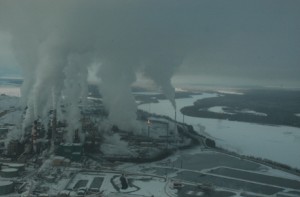 On the heels of the World Health Organization declaring air pollution a carcinogen, a study published this week from the University of California-Irvine and University of Michigan found higher levels of specific carcinogens in communities downwind of Canadian "oil, gas and tar sands processing zones", and higher rates of Luekemia and non-Hodgkin’s lymphoma among men living in those downwind communities.
On the heels of the World Health Organization declaring air pollution a carcinogen, a study published this week from the University of California-Irvine and University of Michigan found higher levels of specific carcinogens in communities downwind of Canadian "oil, gas and tar sands processing zones", and higher rates of Luekemia and non-Hodgkin’s lymphoma among men living in those downwind communities.
Despite their rural location, the recorded levels of the carcinogens, including 1,3-butadiene and benzene, were higher than in some of the world's most polluted cities. Examining area health records that went back a decade showed the number of men with leukemia and non-Hodgkin’s lymphoma was greater in the communities closest to the pollution plumes.
The authors strongly recommended that the industrial emissions be decreased to protect both workers and nearby residents.
“Our study was designed to test what kinds of concentrations could be encountered on the ground during a random visit downwind of various facilities. We’re seeing elevated levels of carcinogens and other gases in the same area where we’re seeing excess cancers known to be caused by these chemicals,” said UC Irvine chemist Isobel Simpson, lead author of the paper in Atmospheric Environment. “Our main point is that it would be good to proactively lower these emissions of known carcinogens. You can study it and study it, but at some point you just have to say, ‘Let’s reduce it.’
Co-author Stuart Batterman, a University of Michigan professor of environmental health sciences, agreed: “These levels, found over a broad area, are clearly associated with industrial emissions. They also are evidence of major regulatory gaps in monitoring and controlling such emissions and in public health surveillance.”
Dr. Batterman is familiar to Downwinders old timers as being the first scientist to take on the state's laughable "Health Risk Assessment" of TXI's burning of hazardous waste at it Midlothian cement plant. In what became known simply as the "Batterman Report," his mid-1990's critique of the official document was devastating in its scope and depth. It became a template on how to deconstruct any TCEQ attempt to gloss over the dangers of living downwind of a large polluter.
In this new study, Dr. Batterman and his colleagues monitored emissions in the rural Fort Saskatchewan area downwind of major refineries, chemical manufacturers and tar sands processors owned by BP, Dow, Shell and other companies in the so-called “Industrial Heartland” of Alberta. Taking random one-minute samples in 2008, 2010 and 2012, the results were very similar over time – amounts of some of the most dangerous Volatile Organic Compounds were 6,000 times higher than normal. Higher than in Mexico City during the 1990s or in the still polluted Houston-Galveston area.
Simpson said the findings were important for other residential areas downwind of refineries and chemical manufacturers, including parts of Los Angeles.
“For any community downwind of heavy industrial activity, I would say it’s certainly prudent to conduct surveys of both air quality – especially carcinogens – and human health."
Cement Plants and Gas Plays Affecting Ozone Levels In….San Antonio?
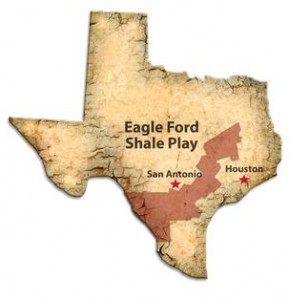 For decades DFW was the only major urban area in Texas to have its air quality challenged by the cement industry. Repeated modeling over the course of the last several local air plans showed that the concentration of the plumes from three huge cement plants in Midlothian could increase downwind ozone levels significantly. Part of this is the voluminous emissions produced by the kilns and part of it's location, location, location – the close proximity of these cement plants to the center of DFW. So much so that you can see their smokestacks from I-20 in Grand Prairie and Arlington.
For decades DFW was the only major urban area in Texas to have its air quality challenged by the cement industry. Repeated modeling over the course of the last several local air plans showed that the concentration of the plumes from three huge cement plants in Midlothian could increase downwind ozone levels significantly. Part of this is the voluminous emissions produced by the kilns and part of it's location, location, location – the close proximity of these cement plants to the center of DFW. So much so that you can see their smokestacks from I-20 in Grand Prairie and Arlington.
Then beginning in 2006 or so, the area's air shed began to be reshaped by the presence of gas production facilities as the Barnett Shale was opened up to exploitation from fracking, a process freshly exempted from just about every federal environmental regulation with passage of the 2005 Energy Act. But unlike large "stationary sources" like cement plants, these gas facilities were spread out over a large area, right in the middle of the Metromess, and were except from the "off-set" requirements of other large polluters. Even though their collective emissions were as large or larger than any other single industrial source, their decentralization allowed their operators to release their tons of pollution into the air without ever having to consider its impact on local smog levels.
That one-two punch of local industrial pollution flies in the face of the office park business image of DFW. Houston has traditionally been the city where industry has made it harder to breathe. In North Texas, it's supposed to be all about cars and trucks. But those cars and trucks lay a mostly uniform blanket of ozone over the entire area, whereas the gas production facilities and the cement plants are concentrated fire hoses of smog-forming pollution that can impact specific monitors over and over again.
And all of this has taken place during a time when the official federal ozone standard has been a relatively high 85 parts per billion. Beginning in 2015, the standard becomes 75 ppb, and it might drop to 65-70 by 2020.
Texas cities like Austin and San Antonio have had little problem complying with the higher standard, but now face obstacles to coming in under the wire of a 75 ppb rule.
For one thing, the only other large concentration of cement plants in Texas besides Midlothian is located along the I-35 corridor from Buda, south of Austin to North San Antonio. Because prevailing winds have often carried the pollution from these plants away from central Austin or San Antonio, they haven't been seen as much of a threat. But now urbanization is increasingly creeping westward into the downwind path of these plumes, adding some heft to the emissions and combining with them to elevate ozone levels.
And then there's the Eagle Ford Shale gas play, the new Wild West of fracking in Texas, taking place directly upwind of central San Antonio. Unlike the urban drilling in the Barnett Shale, most of the activity in the Eagle Ford is taking place in unincorporated parts of South Texas counties. There haven't been any reliable emissions inventory of the pollution coming out of he Eagle Ford, but it's considerable. Anecdotally, there seems to be a lot of flaring that DFW never saw. Because of the amount of production taking place, as well as its location upwind during the summer "Ozone Season," Central Texas is starting to sweat about its impact on its own air quality.
That concern has prompted a regional modeling exercise which is supposed to determine how much, if any, impact the drilling in the Eagle Ford is having on the Alamo City's air. Back in July, we reported that the preliminary numbers of this study showed that gas production was capable raising local ozone levels by as much as 3 to 7 parts per billion by 2018 – exactly when all Texas cities must be in compliance with the new 75 ppb standard.
Maybe 3-7 ppb doesn't seem like much. And it isn't, unless you're already at or above the new 75 ppb standard and that amount will put and keep you over that red line. Like San Antonio in 2013. The July headline in the San Antonio paper was unambiguous: "Eagle Ford drilling is polluting San Antonio's air"
But it looks like someone at the San Antonio Council of Governments is taking a page from DFW and TCEQ officials and downplaying those preliminary numbers from last summer.
Previous studies show that emissions of ozone-forming chemicals from sources other than drilling have dropped significantly since 2007 despite the city's population growth, said Steven Smeltzer, AACOG's environmental manager. Smeltzer attributes the improvement to new vehicle standards and voluntary reductions by local industries.
Preliminary numbers from the AACOG study also indicate that much of the problem lies in the Eagle Ford. InsideClimate News obtained a copy of the data, which have not been made public. The data show that during the months when San Antonio experiences the highest ozone levels—April through October—oil and gas development produced about half the amount of ozone-forming emissions per day as all other industrial sources combined.
Bella said the data came from an early version of the study that wasn't as thorough as later drafts. "My sense is they're really not worth using…They're not solid numbers."
He declined to comment on whether the numbers are close to the latest estimates. What matters isn't the number, he said, but the process behind the study. If the science isn't right, then it's "garbage in, garbage out."
Yeah, we know. Believe it or not, citizens had to literally force the TCEQ to consider the effect of the pollution from Midlothian cement plants before they discovered, wow, they really do have an impact. Likewise, it took Dr. Al Armendariz's 2009 study of Barnett Shale pollution for the state to even consider local gas sources might be a contributing factor to the DFW smog problem – although TCEQ officials are still doing their best to deny it. The largest purveyor of junk science in Texas is the Texas Commission on Environmental Quality. Remember that in 2012, TCEQ's computer model told us to expect the lowest level of smog ever recorded in DFW. Instead we got the highest levels recorded since 2008 or so. So yeah, GIGO.
That's why it's disappointing to see the Council of Government official try to use the same strategy with this new study – whose final edits will be made by TCEQ, not an independent entity. Just like with TCEQ's Wednesday's ruling against 7000 Dallas County doctors that said there's no link between smog and public health, Rick Perry's agency can't afford to admit the state's gas plays are making the state's air illegal and unsafe.
Like San Antonio, almost every other category of pollution in DFW has decreased over the last 6 years – except gas industry pollution. It's the one category of emissions that's grown and grown and grown – to the point where the state itself admitted that the industry was releasing more smog-forming Volatile Organic Compounds than all the trucks and cars on the road in North Texas. As DFW continues to linger in violation of an almost 20-year old obsolete ozone standard, it's the gas industry that is the logical culprit for the backsliding. It's the one variable that's going the opposite direction as all the others. But despite the overwhelming evidence to the contary TCEQ is busy defending the Shale from any charges that it has the least bit of impact on area smog, even to the point of ignoring basic air modeling chemistry.
San Antonio officials may want to deny the link between the Eagle Ford and smog in their city, may want to down play it, and they'll have plenty of rhetorical help from Austin. But when it comes to TCEQ rhetoric versus the real world, the monitors in the field tell the tale. Negligence doesn't make your air cleaner.
Poultry Expert to Doctors: You’re Wrong, Ozone Doesn’t Cause Asthma
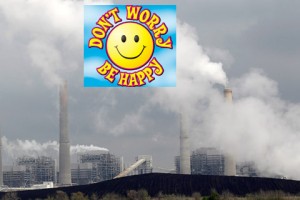 Feigning allegiance to some sort of science the scientists themselves don't use, the Texas Commission on Environmental Quality rejected a petition by the Dallas County Medical Society to put new pollution control equipment on three large coal power plants upwind of DFW, saying there's no real conclusive evidence that smog causes respiratory problems like asthma.
Feigning allegiance to some sort of science the scientists themselves don't use, the Texas Commission on Environmental Quality rejected a petition by the Dallas County Medical Society to put new pollution control equipment on three large coal power plants upwind of DFW, saying there's no real conclusive evidence that smog causes respiratory problems like asthma.
It may come as a surprise to newcomers, but the largest state environmental agency in the U.S. has never recognized a connection between ozone pollution, or smog, and respiratory problems. Austin has fought the implementation of every new ozone standard ever proposed by EPA and played down any causal link suggested by recent studies. If you want to know what's behind the current push in the US House of Representatives to discredit the historical "6-Cities Study" – the basis for the original connection between smog and public health, look no further than the Texas Commission on Environmental Quality, where such mainstream science has never been accepted. It's not in industry's interest, or the pro-industry-constantly-running-for-something Governor, whose fingerprints so besmirch the TCEQ these days, even new file clerk positions are considered ideological appointments.
TCEQ Chairman Bryan W. Shaw said studies suggest that cutting ozone alone might not prevent asthma attacks.
“I’m convinced that it doesn’t make sense to get ahead of the science,” Shaw said. He later added, “I don’t want there to be this knee-jerk reaction.”
Commissioner Toby Baker said asthma has “a wealth of confounding factors.” To assume that a correlation between high ozone and asthma hospitalizations means ozone causes asthma is “frankly irresponsible,” Baker said.
That would be Bryan Shaw, A&M Poultry Science major, and Toby Baker, A&M Public Administration major. Both of them have the same amount of expertise in medicine and public health, which is to say none. But that doesn't stop them from discounting the doctor's own experience with layers of condescension.
“We’re still seeing harm to our patients on high ozone days,” Dr. Robert Haley, a professor at UT-Southwestern Medical Center, told the commissioners. “The fact remains that the Dallas-Fort Worth area has among the worst ozone levels in the nation, Dr. Robert Haley, a professor at UT-Southwestern Medical Center, told the commissioners.“
But the Commissioners had an answer for that concern too: just wait for our next DFW clean air plan! In 2015! To address smog problems that don't worry us at all! That will be just as effective as the last one! Which ended with higher ozone levels than when it started! Which is why we definitely do not need to better control the air pollution from big, obsolete coal plants!
See how that little bit of misdirection works?
The only way DFW will ever see real clean air progress while Rick Perry's TCEQ is in charge is if local governments do it on their own. No amount of professional public health concern is enough to outweigh the total Rick Perryization of the agency. Not even when it comes from 7000 Dallas County doctors.
Meanwhile, good on Public Citizen, Dr. Haley, and the Dallas Medical Society for creating the most high-profile intervention to date into DFW air pollution politics by the local medical community. And we'll hold Haley to his promise that the group is going to "continue to push for cleaner air," because folks could sure use the help – and not just with East Texas coal plants. Soon they'll be meetings of the North Texas Clean Air Steering Committee to discuss that next TCEQ air plan for DFW. It's a local air policy committee with no health professional as a member. Perhaps The Dallas Medical Society would like a seat?
And on Thursday November 7th, the EPA is hosting what it calls a "listening session" on proposed new rules for carbon emissions from all power plants including the East Texas coal-powered ones, at the downtown Dallas Library from 10 am to 3 pm. Implementing these rules would most likely internalize too many of the costs that are being absorbed by the environment now for these dinosaurs to keep operating profitably. So even though the docs lost the battle in Austin on Wednesday, the war is still capable of being won. Stay tuned.
The Dallas Gas Wars Are Getting Noticed
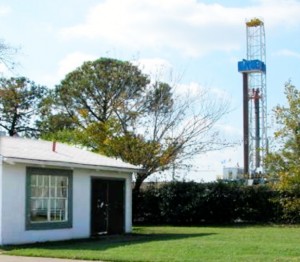 The Texas Tribune has a pretty good overview of the different ways Texas municiplaities are regulating gas drilling, including the contrast between industry-friendly Ft. Worth and a more skeptical Dallas:
The Texas Tribune has a pretty good overview of the different ways Texas municiplaities are regulating gas drilling, including the contrast between industry-friendly Ft. Worth and a more skeptical Dallas:
Meanwhile, industry representatives and some lawyers point to Fort Worth, 40 miles west of Dallas, as a model for balancing economic and environmental concerns. Between 2006 and 2012, the city took in nearly $264 million in natural gas revenue, including lease bonuses, royalties and property taxes on mineral leases.
Fort Worth’s ordinance — which limits noise, keeps most drilling 600 feet from homes and spells out duties for local inspectors — has grown to more than 60 pages from five. Most recently, the city tightened rules on gas compressors.
But environmentalists point to the city as a model to avoid. It is pockmarked with more than 1,700 producing wells, with pad sites nestled beside sports fields, homes and schools.
“It’s gradually chipping away the quality of life,” said Don Young, a 62-year-old Fort Worth native and longtime activist, who worries that drilling has worsened air quality.
In 2011, a study commissioned by the city concluded that drilling exposed residents to harmful pollutants like acrolein, benzene and formaldehyde, but not at dangerous levels.
Ridley said Fort Worth had come up several times in the planning commission’s talks, but mostly when suggesting stricter regulations. “We arrived at what we thought was an effective means to protect people,” he said.

